What is moving head profile light ? | Ultimate Insight
- Introduction: Illuminating the Stage with Moving Head Profile Lights
- What Exactly is a Moving Head Profile Light?
- The Anatomy of a High-Performance Moving Head Profile Fixture
- The Light Source: LED vs. Arc Lamp
- Optics and Lenses: Precision Beam Shaping
- Gobos: Crafting Dynamic Visual Effects
- Colors: Palette for Every Mood
- Prisms and Effects: Adding Depth and Dimension
- Iris and Frost: Fine-Tuning the Beam
- Pan & Tilt: The Art of Dynamic Movement
- Control Systems: DMX and Beyond
- How Does a Moving Head Profile Light Work? Understanding the Mechanics
- Diverse Applications: Where Do Moving Head Profile Lights Shine Brightest?
- Theatrical Productions: Precision Storytelling
- Music Concerts & Live Events: Spectacle and Energy
- Broadcast & Studio Environments: Flawless Illumination
- Corporate Events & Exhibitions: Branding with Light
- Nightclubs & Entertainment Venues: Dynamic Atmospheres
- Religious & Architectural Lighting: Enhancing Sacred Spaces
- The Undeniable Advantages of Integrating Moving Head Profile Lights
- Choosing the Right Moving Head Profile Light for Your Project
- Power Output and Brightness
- Feature Set (Gobos, Color, Prism)
- Beam Angle and Zoom Range
- Durability and Reliability
- Manufacturer Reputation and Support
- Budget Considerations
- LQE's Commitment to Advancing Stage Lighting Technology
- Conclusion: Master the Art of Light with Profile Moving Heads
- Frequently Asked Questions (FAQs)
Introduction: Illuminating the Stage with Moving Head Profile Lights
In the vibrant and ever-evolving world of live events, theatre, and broadcast, lighting is far more than mere illumination—it's an art form that shapes perception, evokes emotion, and guides the audience's gaze. Among the myriad of stage lighting equipment available, the moving head profile light stands out as a versatile and indispensable tool for designers seeking precision, dynamic effects, and unparalleled control. At LQE, founded in 2008 as a professional OEM/ODM stage lighting equipment manufacturer, we understand the critical role these sophisticated fixtures play in bringing visions to life. From our 10,000 square meter production base in Foshan, China, where we produce 100,000 lighting fixtures annually, we witness firsthand the transformative power of expertly designed and manufactured lighting.
This insight will demystify the moving head profile light, exploring its definition, intricate components, operational mechanics, and diverse applications. Whether you're a seasoned lighting professional, an aspiring stage designer, or an event planner looking to elevate your next production, understanding these high-end stage lighting fixtures is key to unlocking truly spectacular results. Join us as we shine a light on one of the most powerful tools in modern stagecraft.
What Exactly is a Moving Head Profile Light?
A moving head profile light is an advanced, robotic lighting fixture characterized by its ability to project a focused, shapable beam of light. Unlike its counterpart, the moving head wash light, which creates a soft, broad wash of color, a profile light is designed for precision. Its core function is to produce a crisp, hard-edged beam, often with the capability to project custom shapes, patterns (gobos), and various effects. This precision control over the beam's edge and its ability to be shaped makes it ideal for highlighting specific performers, objects, or areas on a stage, hence the term “profile.”
These professional digital stage lighting fixtures achieve their versatility through a complex internal optical system and mechanical components that allow for pan (horizontal) and tilt (vertical) movement, along with control over focus, zoom, color, and additional effects. This combination makes them an essential element for creating dynamic visual narratives across a multitude of applications, from dramatic theatrical scenes to high-energy concert spectaculars.
The Anatomy of a High-Performance Moving Head Profile Fixture
Understanding the internal workings of a moving head profile light reveals the engineering marvel behind its performance. Each component works in harmony to deliver the stunning visual effects designers rely on. LQE’s commitment to R&D, backed by 80 national patents, ensures that our fixtures incorporate cutting-edge technology for superior results.
The Light Source: LED vs. Arc Lamp
Historically, moving head lights relied on discharge lamps (arc lamps), known for their intense brightness. However, the industry has largely shifted towards LED stage lighting technology, especially for modern moving head profile lights. LEDs offer numerous advantages: significantly lower power consumption, longer lifespan (often 20,000 to 50,000 hours compared to hundreds for arc lamps), consistent color temperature, and virtually no heat output. This translates to reduced operational costs, less maintenance, and enhanced environmental sustainability. LQE specializes in leveraging advanced LED technology to provide high-quality, long-lasting lighting solutions that meet contemporary demands for efficiency and performance.
Optics and Lenses: Precision Beam Shaping
The optical system is the heart of a moving head profile light. It comprises multiple lenses and mirrors designed to gather the light from the source, focus it into a tight beam, and then project it with incredible precision. High-quality optics are crucial for maintaining a sharp beam edge and ensuring consistent light distribution across the projection. Features like motorized zoom and focus allow designers to precisely adjust the beam size and clarity from the control console, adapting to various stage requirements instantly.
Gobos: Crafting Dynamic Visual Effects
Gobos (short for “go-betweens”) are patterned stencils placed in the light path to project shapes, textures, or logos. Moving head profile lights often feature multiple gobo wheels—one for static gobos (fixed patterns) and another for rotating gobos (allowing patterns to spin). These can include anything from abstract textures to specific company logos or theatrical scenery. Some advanced fixtures, including those from LQE’s range of professional stage lighting, offer animation wheels that create dynamic, flowing effects, adding depth and narrative to a stage design. The ability to customize gobos allows for unique branding and artistic expression, making them invaluable for event lighting and thematic productions.
Colors: Palette for Every Mood
Color is a fundamental element of stage lighting, and moving head profile lights offer sophisticated color mixing capabilities. Most high-end fixtures utilize CMY (Cyan, Magenta, Yellow) color mixing, where dichroic filters incrementally blend to create millions of distinct hues. This subtractive mixing system offers smooth, seamless transitions between colors. Additionally, some profile lights include a fixed color wheel with pre-set saturated colors, providing instant access to specific shades. This extensive color palette allows designers to establish mood, highlight performers, and create striking visual contrasts.
Prisms and Effects: Adding Depth and Dimension
To further enhance visual complexity, many moving head profile lights incorporate prism effects. A prism is a faceted glass component that splits a single beam of light into multiple, symmetrical beams, effectively multiplying a gobo pattern across the stage. Common prism types include 3-facet, 4-facet, or linear prisms, each offering a unique aesthetic. Combined with rotation, prisms create captivating, dynamic patterns. Other effects can include frost filters (softening the beam edge), animation effects, and even graphic wheels, all designed to add texture, movement, and layers to the lighting design.
Iris and Frost: Fine-Tuning the Beam
The iris is a mechanical aperture that can be opened or closed to control the diameter of the light beam, allowing for precise highlighting of small areas or objects. It creates a perfectly circular, hard-edged beam. A frost filter, on the other hand, is a diffusing element that softens the edges of the beam, transforming the profile light into something closer to a wash effect. This is particularly useful for blending light, reducing harsh shadows, or creating atmospheric effects. The ability to switch between hard-edged and soft-edged beams offers incredible versatility in a single moving head fixture.
Pan & Tilt: The Art of Dynamic Movement
The most distinctive feature of a moving head profile light is its ability to move dynamically across the stage. Pan refers to the horizontal rotation (typically up to 540 degrees), while tilt refers to the vertical movement (often up to 270 degrees). These movements are controlled by precise stepper motors, allowing for smooth, rapid, and repeatable positioning of the light beam. This dynamic capability enables designers to follow performers, create sweeping air effects, or transition between multiple focus points seamlessly, enhancing the overall dynamism of the show.
Control Systems: DMX and Beyond
The magic of a moving head profile light comes alive through its control system, predominantly DMX512 (Digital Multiplex). DMX is a standard communication protocol that allows a lighting console to send commands to individual fixtures, controlling every parameter from pan and tilt to color, gobo selection, focus, and dimming. Each feature of the light corresponds to a DMX channel, providing granular control over every aspect of its operation. Modern fixtures also increasingly integrate with Ethernet-based protocols like Art-Net or sACN for larger, more complex lighting networks, streamlining control for comprehensive lighting solutions.
How Does a Moving Head Profile Light Work? Understanding the Mechanics
At its core, a moving head profile light functions like a sophisticated projector. Light originates from the powerful LED source, passes through a series of optical elements, including lenses, gobos, color filters, and prisms. Each of these elements is precisely positioned by miniature motors, all controlled by commands sent from a lighting console via DMX. When a designer adjusts a parameter on the console, a digital signal travels to the fixture, instructing the corresponding motor to move a lens, rotate a gobo wheel, or change a color filter. Meanwhile, larger motors precisely control the fixture's pan and tilt movements, allowing the beam to be directed anywhere on the stage with speed and accuracy. This seamless interplay of digital commands and mechanical execution is what enables the intricate and breathtaking light shows seen today.
Diverse Applications: Where Do Moving Head Profile Lights Shine Brightest?
The versatility of the moving head profile light makes it indispensable across a wide spectrum of events and venues. Its ability to combine precision with dynamic movement allows for creative applications that transcend mere illumination.
Theatrical Productions: Precision Storytelling
In theatre, theatrical lighting requires nuanced control to support the narrative. Moving head profile lights excel here by providing sharp, controllable beams to highlight actors, define stage areas, or project scenic elements like windows, trees, or patterns onto the backdrop. Their ability to change focus, color, and position quickly means a single fixture can serve multiple cues, dramatically reducing the number of conventional lights needed and offering greater flexibility for complex scenes.
Music Concerts & Live Events: Spectacle and Energy
For concert lighting and large-scale live events, moving head profile lights are crucial for creating high-impact visual spectacle. They are used to generate dramatic aerial effects, follow performers with precision spotlights, project dynamic patterns across the audience, and build energy through rapid movements and vibrant color changes. The powerful output and wide range of effects make them perfect for complementing the music and enhancing the immersive experience for thousands of attendees.
Broadcast & Studio Environments: Flawless Illumination
In television studios and broadcast settings, the consistent and high-quality illumination from moving head profile lights is essential. They are used for key lighting, backlighting, and even to project subtle textures or branded logos onto sets. The ability to adjust color temperature, focus, and intensity remotely helps achieve perfect lighting for cameras, ensuring a polished and professional look for broadcasts, news segments, and talk shows. LQE’s lighting fixtures are designed to meet the stringent demands of studio environments.
Corporate Events & Exhibitions: Branding with Light
For corporate events, product launches, and trade shows, moving head profile lights are invaluable for branding and atmosphere creation. They can project company logos, messages, or themed patterns onto walls, floors, or screens, reinforcing brand identity. Their flexibility allows for rapid changes in lighting schemes to match different segments of an event, from presentations to networking receptions, making them a smart investment for versatile event lighting.
Nightclubs & Entertainment Venues: Dynamic Atmospheres
In nightclubs, bars, and other entertainment venues, moving head profile lights are central to creating an energetic and immersive atmosphere. Their fast pan/tilt movements, gobo projections, and vibrant color changes sync with music to drive the dance floor experience. They provide the dynamic light shows that define modern nightlife, engaging patrons and enhancing the overall entertainment value.
Religious & Architectural Lighting: Enhancing Sacred Spaces
Beyond entertainment, moving head profile lights are increasingly used in religious spaces and for architectural applications. They can subtly highlight architectural features, project stained-glass-like patterns, or provide focused illumination for ceremonies. The ability to precisely control the beam and color allows for respectful and impactful enhancement of sacred spaces or the dynamic illumination of building facades for special occasions.
The Undeniable Advantages of Integrating Moving Head Profile Lights
Investing in moving head profile lights offers a multitude of benefits that extend beyond mere visual appeal:
- Unmatched Versatility: A single profile fixture can replace several conventional lights, offering variable beam sizes, colors, and effects, making it a highly adaptable solution for diverse production needs.
- Dynamic Visual Impact: The ability to move, change color, and project patterns creates breathtaking visual sequences that captivate audiences and elevate the production value of any event.
- Precision Control: With features like motorized focus, zoom, iris, and gobos, designers have granular control over every aspect of the light beam, allowing for exact placement and shaping.
- Efficiency and Longevity: Modern LED-based moving head profile lights offer significant energy savings and extended operational lifespans, reducing maintenance costs and environmental impact compared to older lamp technologies.
- Rapid Deployment & Flexibility: Preset scenes and remote control via DMX allow for quick changes and adjustments, providing unparalleled flexibility during live performances and quick turnarounds between events.
Choosing the Right Moving Head Profile Light for Your Project
Selecting the optimal moving head profile light for your specific needs requires careful consideration of several factors. As an experienced OEM/ODM stage lighting manufacturer, LQE guides clients through this crucial decision-making process, ensuring they get the best value and performance.
Power Output and Brightness
The required brightness (measured in lumens or lux) depends on the venue size, ambient light levels, and desired impact. Larger venues or outdoor events typically demand higher power output. LQE offers a range of LED stage lighting solutions with varying power specifications to meet diverse requirements, from intimate theatre settings to massive concert arenas.
Feature Set (Gobos, Color, Prism)
Evaluate the array of effects offered. Do you need extensive gobo customization (static, rotating, animation)? Is CMY color mixing essential, or are fixed color wheels sufficient? How important are prisms and other beam-shaping effects? Consider the complexity and type of visual effects you aim to achieve.
Beam Angle and Zoom Range
The beam angle determines how wide or narrow the light spread is. A wide zoom range offers greater flexibility, allowing the fixture to create broad washes or tight, focused beams as needed. This is a critical specification for adaptability in different production scenarios.
Durability and Reliability
Stage lighting equipment operates in demanding environments. Look for robust construction, quality components, and reliable performance. LQE's products are built to last, designed for the rigors of touring and continuous use, ensuring high-quality, long-lasting lighting solutions.
Manufacturer Reputation and Support
Choose a manufacturer with a proven track record. LQE, with its 15+ years in the industry, 80 national patents, and dedication to R&D, stands as a testament to quality and innovation. Excellent customer service, technical support, and warranty are crucial for a smooth long-term experience when you buy moving head profile lights.
Budget Considerations
While an investment, remember that higher-quality fixtures often offer better performance, reliability, and a longer lifespan, leading to lower total cost of ownership. LQE is committed to providing first-class modern stage lighting equipment while maintaining the best value and cost-effectiveness in the industry.
LQE's Commitment to Advancing Stage Lighting Technology
At LQE, our journey began in 2008 with a vision to become the world's leading manufacturer of LED stage lighting. Headquartered in Foshan, China, we are a professional OEM/ODM stage lighting equipment manufacturer specializing in the R&D, production, and sales of middle- and high-end digital stage lighting. Our production base, spanning approximately 10,000 square meters, has the robust capability to produce 100,000 lighting fixtures annually, a testament to our scale and efficiency.
Our dedication to innovation is underscored by our impressive portfolio of 80 national patents, reflecting our relentless pursuit of technological advancement in professional stage lighting. Our diverse range of stage lighting equipment, including various moving head lights and static lights, is meticulously designed for applications in theatres, music concert stages, studios, broadcasting, religious spaces, exhibitions, nightclubs, leisure venues, theme parks, and more. We are deeply committed to providing first-class modern stage lighting equipment and exceptional customer service, all while maintaining the best value and cost-effectiveness in the industry. Our goal is to deliver high-quality, long-lasting lighting solutions that empower stage designers and producers to realize their most ambitious visions, enhancing every performance with brilliant, reliable light.
Conclusion: Master the Art of Light with Profile Moving Heads
The moving head profile light is undoubtedly a cornerstone of modern stage lighting, offering an unparalleled blend of precision, versatility, and dynamic visual impact. From its sophisticated optical system to its powerful LED engine and intricate control features like gobos, CMY mixing, and prisms, every aspect is engineered to provide designers with the tools to craft truly captivating lightscapes. Its applications span the entire entertainment spectrum, proving its indispensability in creating atmosphere, guiding focus, and amplifying emotional resonance.
At LQE, we are proud to be at the forefront of this technology, designing and manufacturing high-end stage lighting fixtures that empower creativity and deliver exceptional performance. As you continue to explore the possibilities of light, remember that choosing the right equipment from a trusted manufacturer like LQE is the first step towards realizing your vision. We invite you to explore our advanced LED stage lighting solutions and discover how our commitment to innovation, quality, and value can illuminate your next project with unparalleled brilliance.
Frequently Asked Questions (FAQs)
Q1: What's the difference between a moving head profile, spot, and wash light?
A profile light (often interchangeable with 'spot' in modern context) produces a hard-edged, focused beam with capabilities to project patterns (gobos) and be shaped by shutters. A wash light, conversely, creates a soft, diffused beam designed to provide broad coverage and color washes, bathing an area in light without sharp edges. While 'spot' was traditionally used for fixed, focused beams, moving head spots/profiles now refer to the same type of fixture that can project sharp patterns and shapes.
Q2: Are LED moving head profile lights better than traditional lamp-based ones?
Yes, generally. LED moving head profile lights offer significant advantages: longer lifespan (up to 50,000 hours vs. a few hundred), lower power consumption, reduced heat output, greater color consistency, and often more compact designs. While traditional arc lamps might offer slightly higher raw intensity in some cases, LED technology has rapidly caught up and often surpasses them in overall performance and cost-effectiveness over time, especially for high-quality digital stage lighting.
Q3: Can I customize gobos for moving head profile lights?
Absolutely! Custom gobos are a popular feature, especially for corporate events, branding, or unique theatrical designs. You can typically order custom metal or glass gobos with specific logos, patterns, or artwork from specialized suppliers. These gobos are then inserted into the fixture's gobo wheels.
Q4: What is DMX control, and why is it important for moving head lights?
DMX512 (Digital Multiplex) is the standard digital communication protocol used to control stage lighting and effects. It's crucial for moving head lights because it allows a single lighting console to precisely control every parameter of each fixture—including pan, tilt, color, gobos, focus, zoom, and intensity—independently and in perfect synchronization, enabling complex and dynamic light shows.
Q5: How long do LED moving head profile lights typically last?
The lifespan of an LED moving head profile light's light source is significantly longer than traditional lamps, typically ranging from 20,000 to 50,000 operational hours. The overall fixture lifespan also depends on factors like mechanical wear, environmental conditions, and maintenance. High-quality fixtures from reputable manufacturers like LQE are designed for longevity and robust performance over many years.
Everything You Need to Know About moving head dj light
Top 10 spotlight stage lighting Manufacturers and Supplier Brands in us
How to start the led moving head wash zoom business ?
How to Choose the led bar stage lights manufacturer and supplier ?
Distributor
How can I apply to become a distributor?
Simply fill out the contact form on this page or email us directly with your company information, market background, and cooperation intention. Our sales team will get in touch with you within 1–2 business days.
Is there a minimum order quantity (MOQ) to become a distributor?
MOQ requirements vary based on the product line and market region. However, for long-term distribution partnerships, we are flexible and can start with a trial order to build trust.
What types of companies can become LQE distributors?
We welcome partnerships with companies that have experience in the entertainment, AV, lighting, or stage equipment industries. Whether you are a local reseller, importer, system integrator, or project contractor, we are open to exploring win-win cooperation.
1000w
What Is the Warranty Offered by LQE Lighting?
LQE lighting offers a comprehensive 1-year warranty and spare parts on its products, giving customers peace of mind and investment protection.
What Kind of Certificates You Offer?
All kinds of certificates could be offered by LQE digital moving light factory, which depends on customer’s required, different pricing plan for different approval.
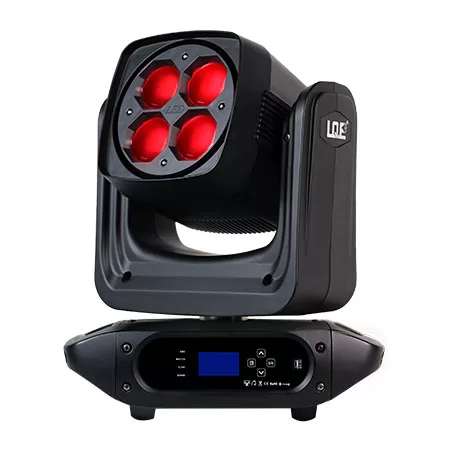
LED Moving Head Stage Wash Light LW200Z
The versatile moving head stage light provides a powerful lighting solution for theaters, concerts, and large outdoor performances. Suitable for theaters, TV stations, entertainment stages, and large outdoor performance scenes.
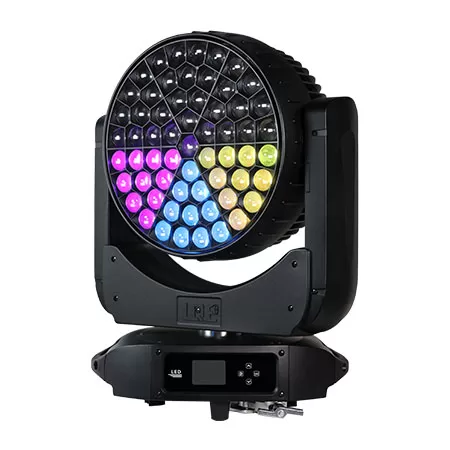
1000w 61x40w RGBW Stage Moving Head Wash Light LW1000
1000W 61x40W LED RGBW Mulichips Moving Head Wash Lights with Zoom (5°–50°), Covering Large Range and Long Distance. Designed to deliver a 5°–50° ultra-large zoom range to achieve a greater wash effect, illuminating stages and events with stunning lighting effects.
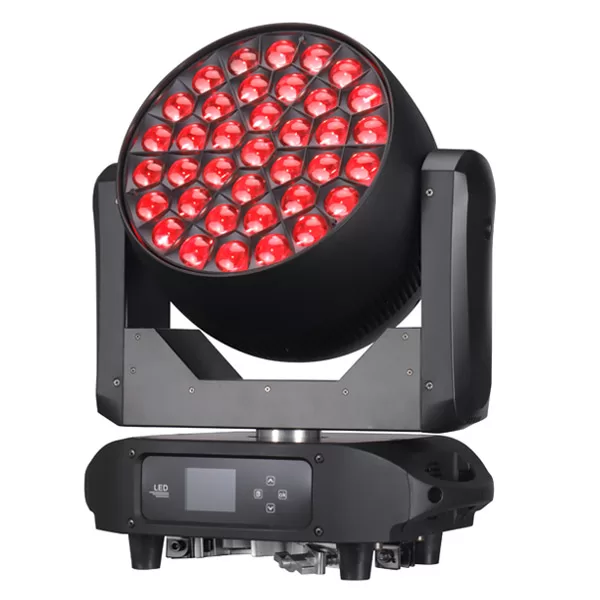
800w 37x40w RGBW Stage Moving Head Wash Light LW800
800W 37x40W LED RGBW Mulichips Moving Head Wash Lights with Zoom (5°-50°), Covering Large Range and Long Distance. Designed to deliver a 5°–50° ultra-large zoom range to achieve a greater wash effect, illuminating stages and events with stunning ring control lighting effects.
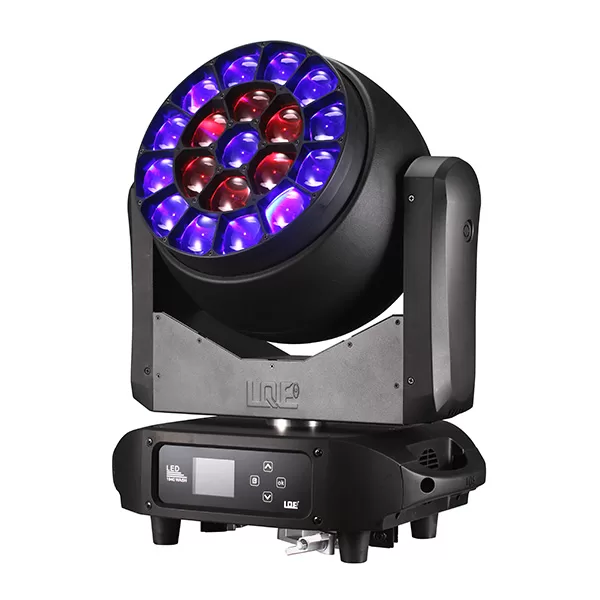
600w 19x40w RGBW Stage Moving Head Wash Light LW600 Zoom IP20
600W 19x40W LED RGBW Mulichips Moving Head Wash Lights with Zoom (5°–50°), Covering Large Range and Long Distance. IP20: Designed to deliver a 5°–50° ultra-large zoom range to achieve a greater wash effect, illuminating stages and events with stunning ring control lighting effects.

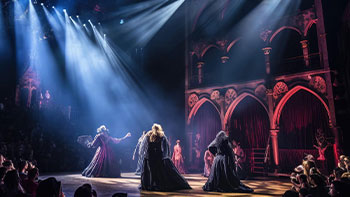
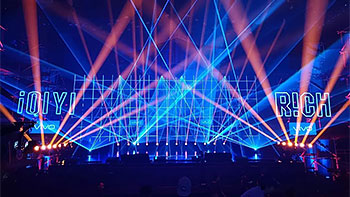
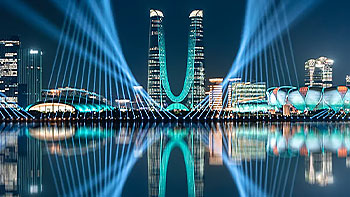
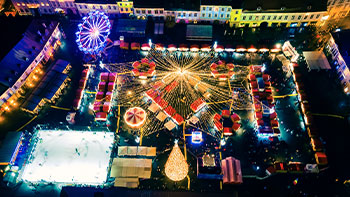
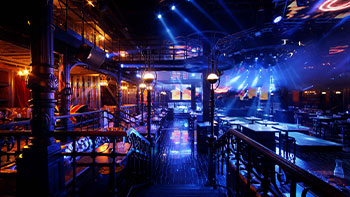
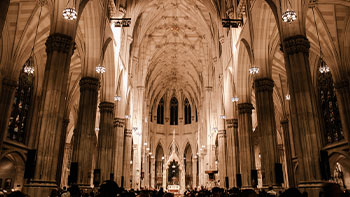






Linkedin
YouTube
Whatsapp: +8618924548390
TikTok